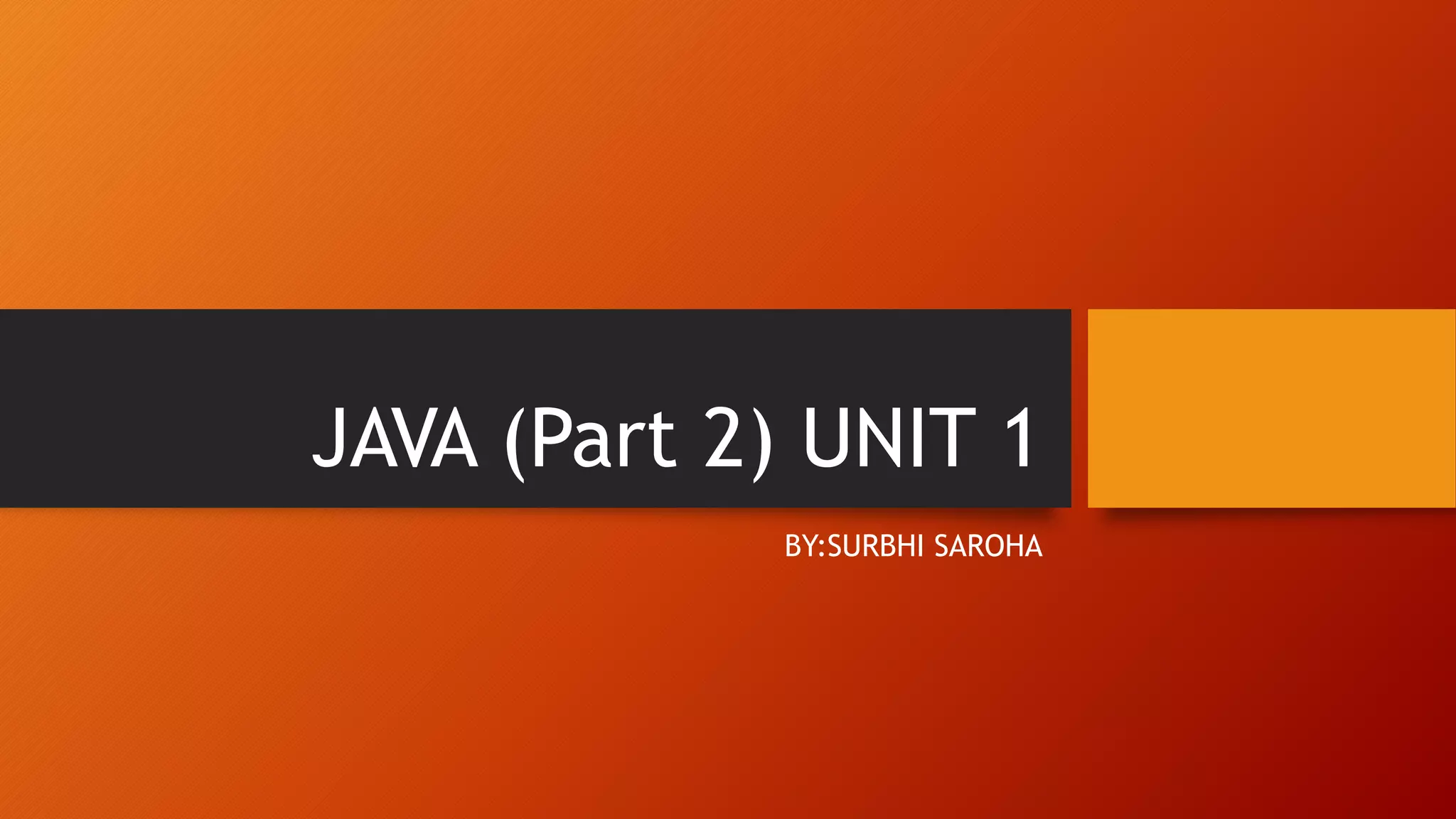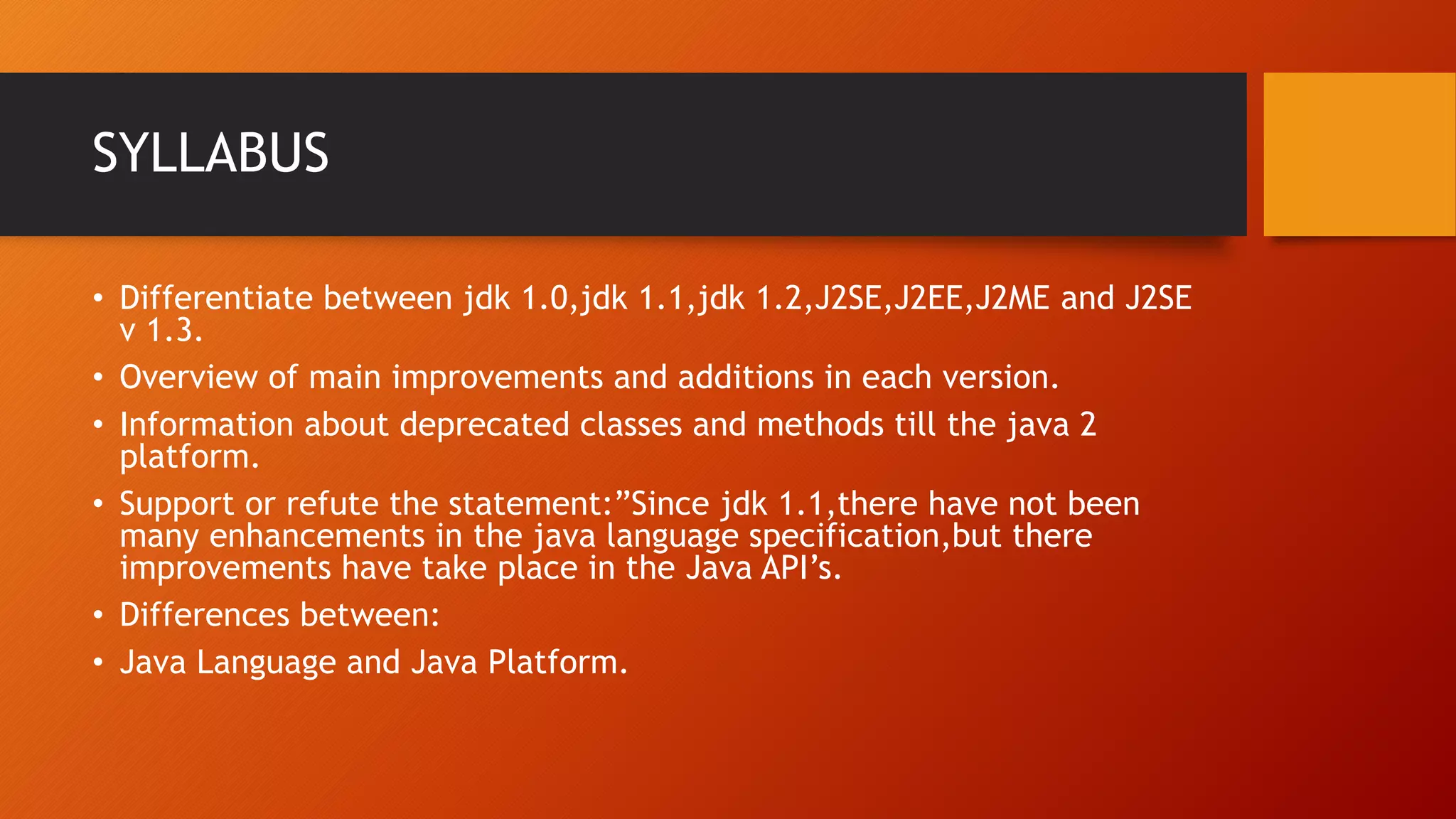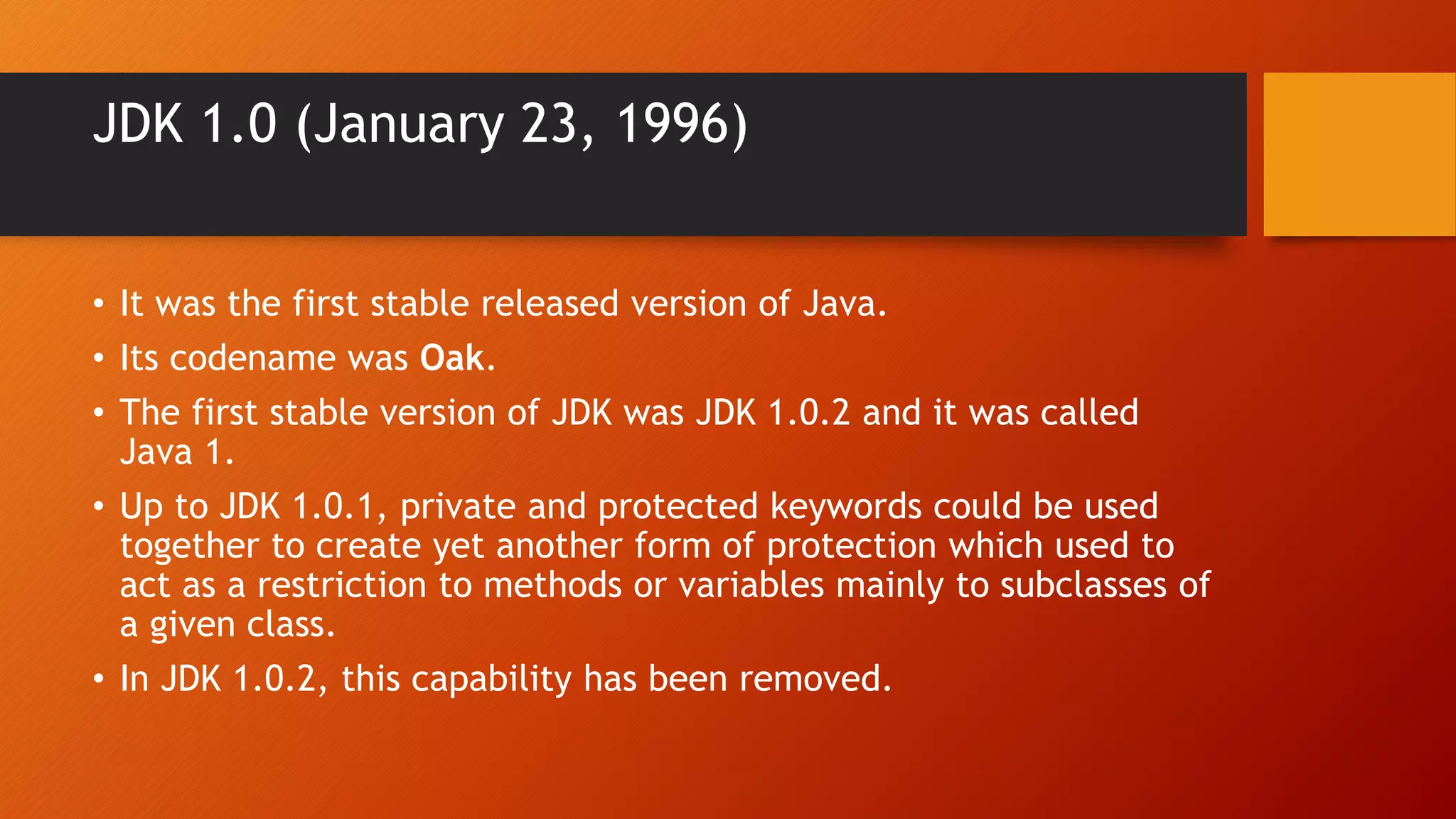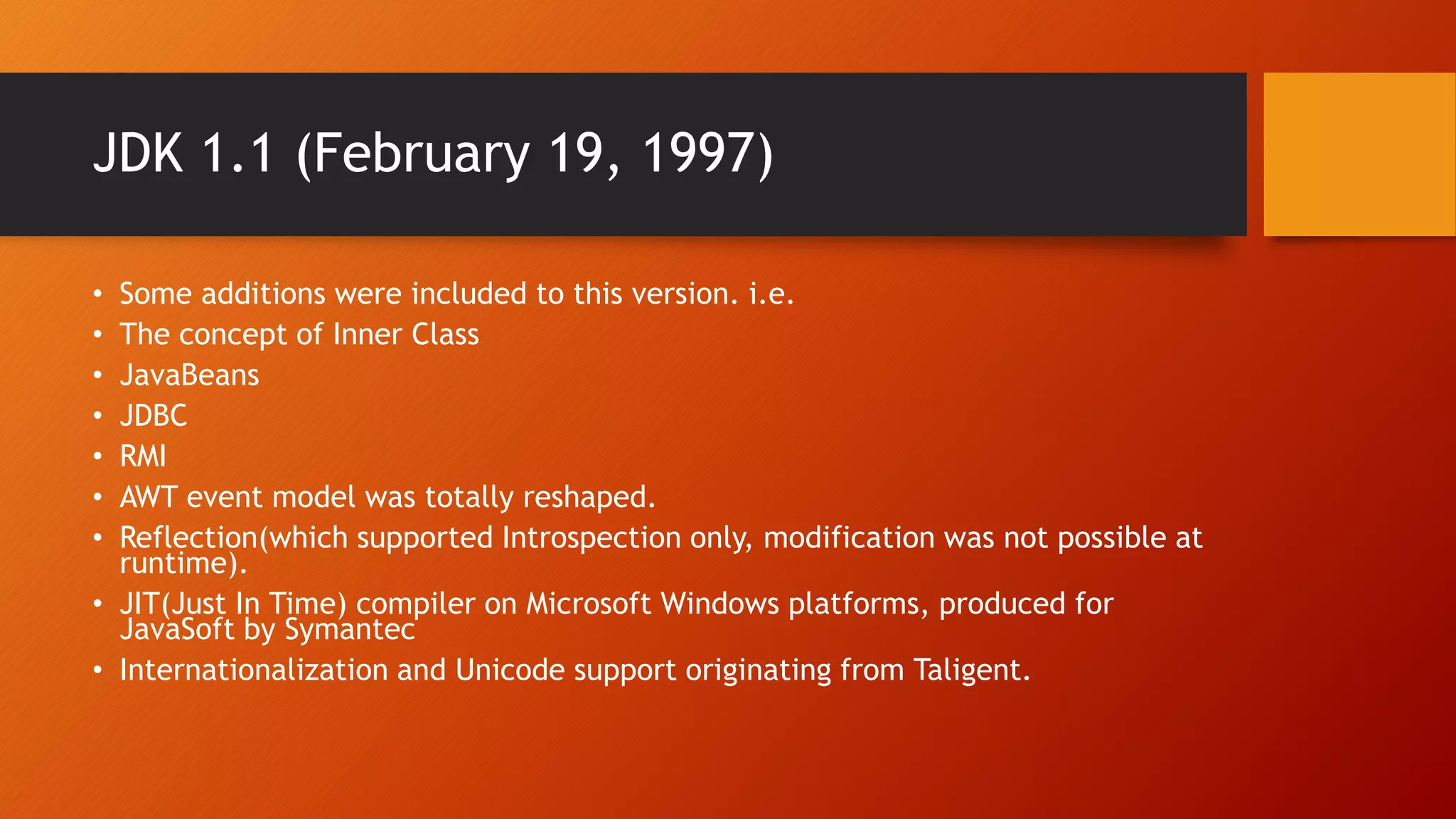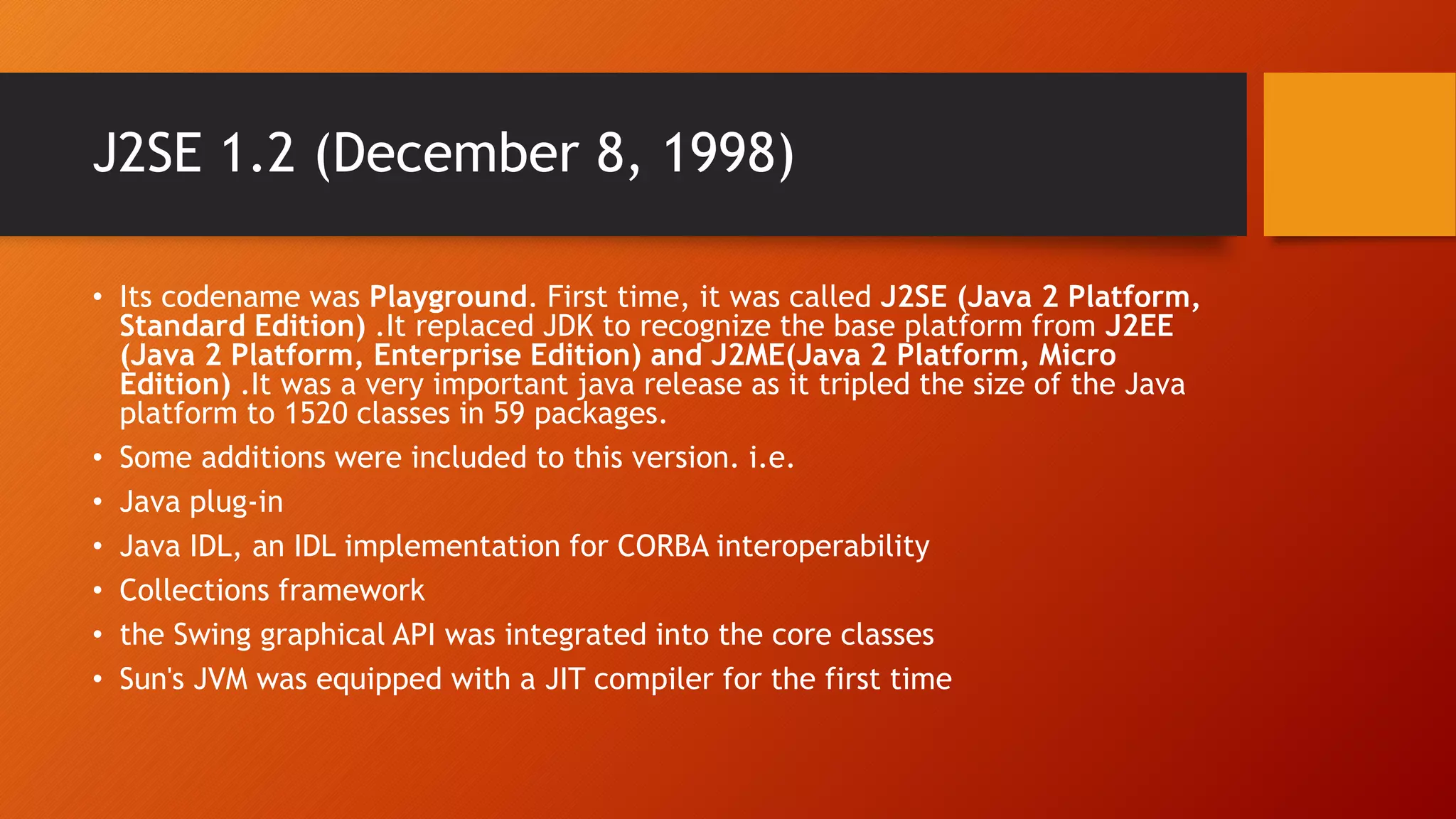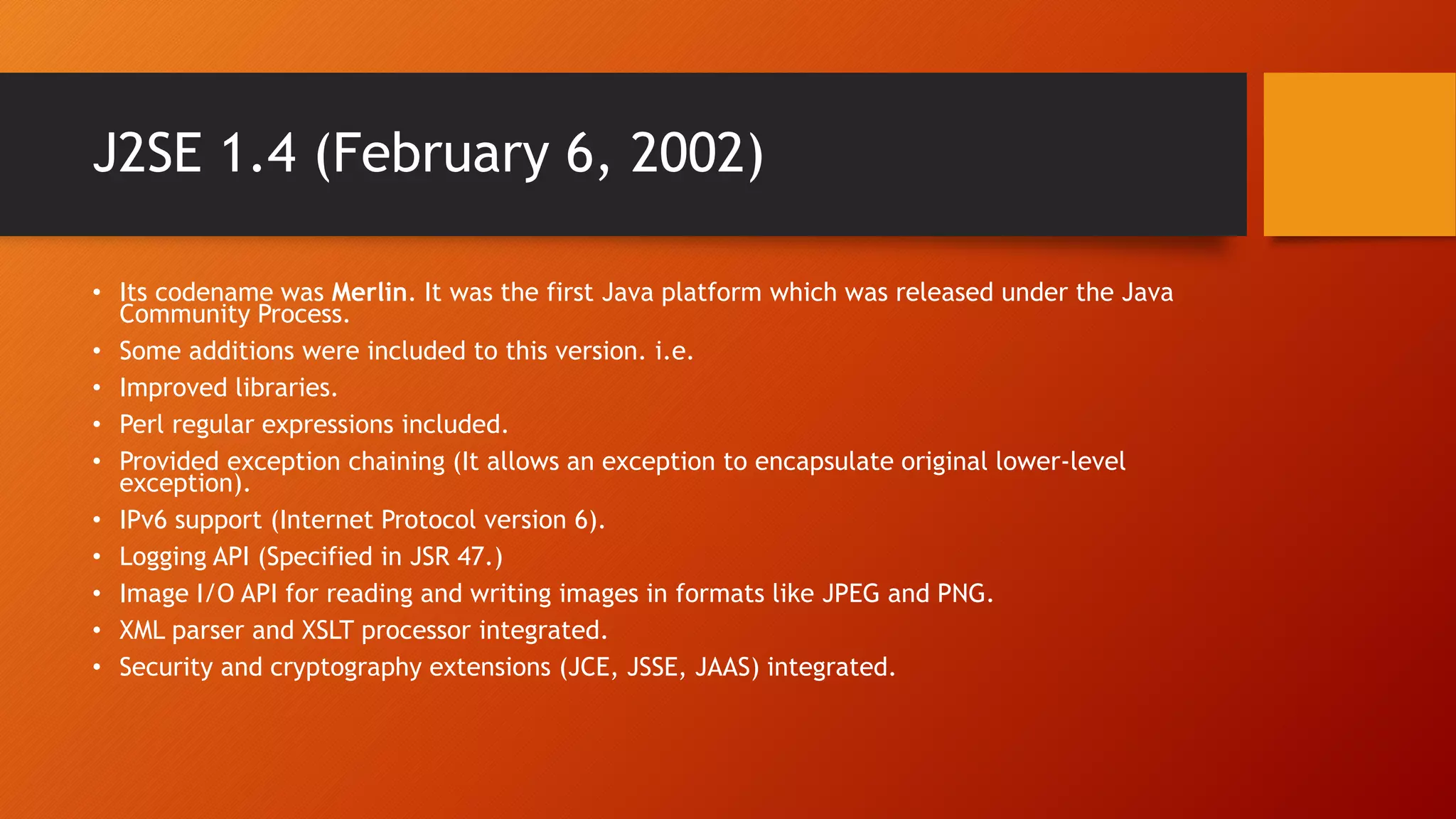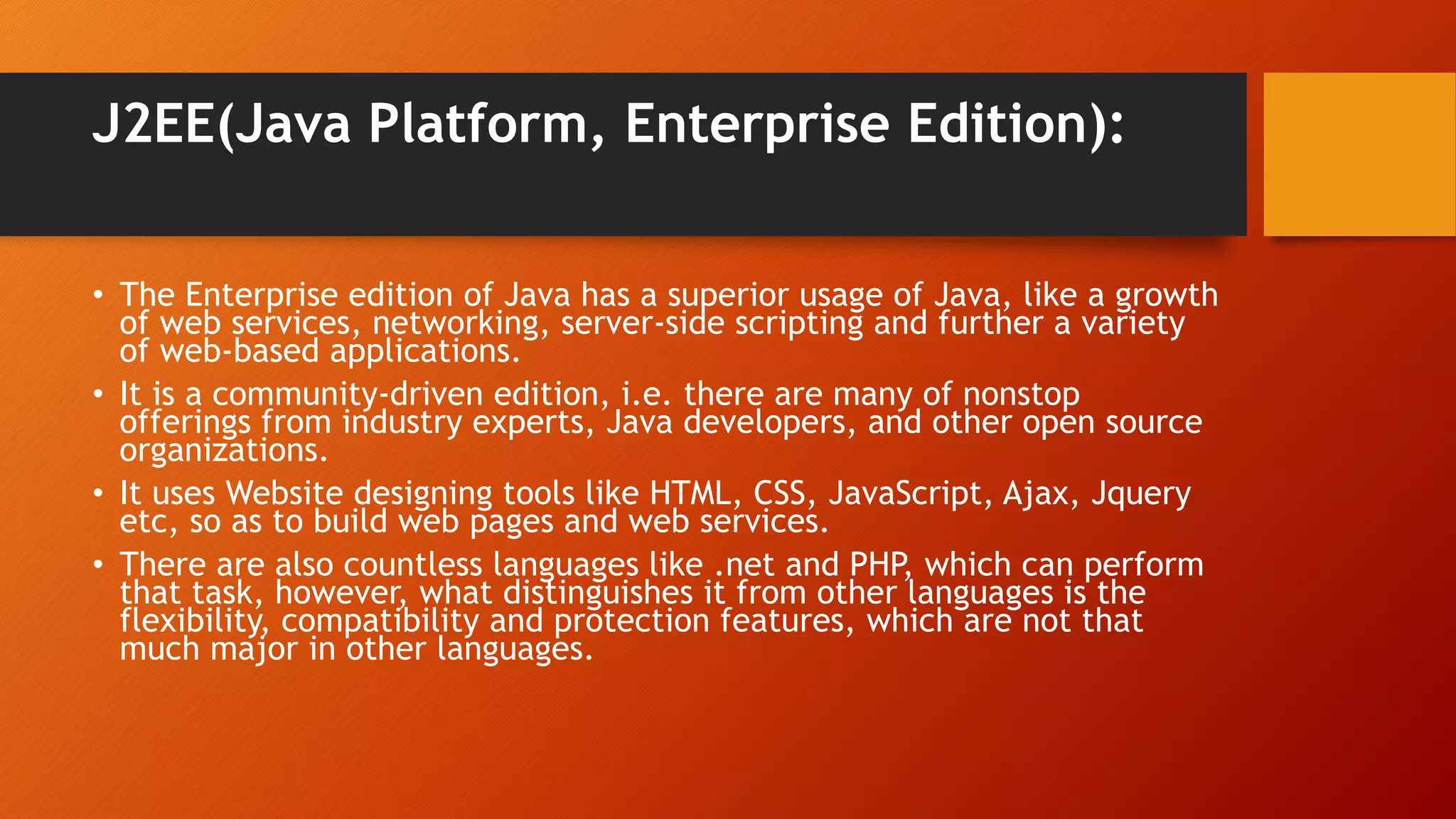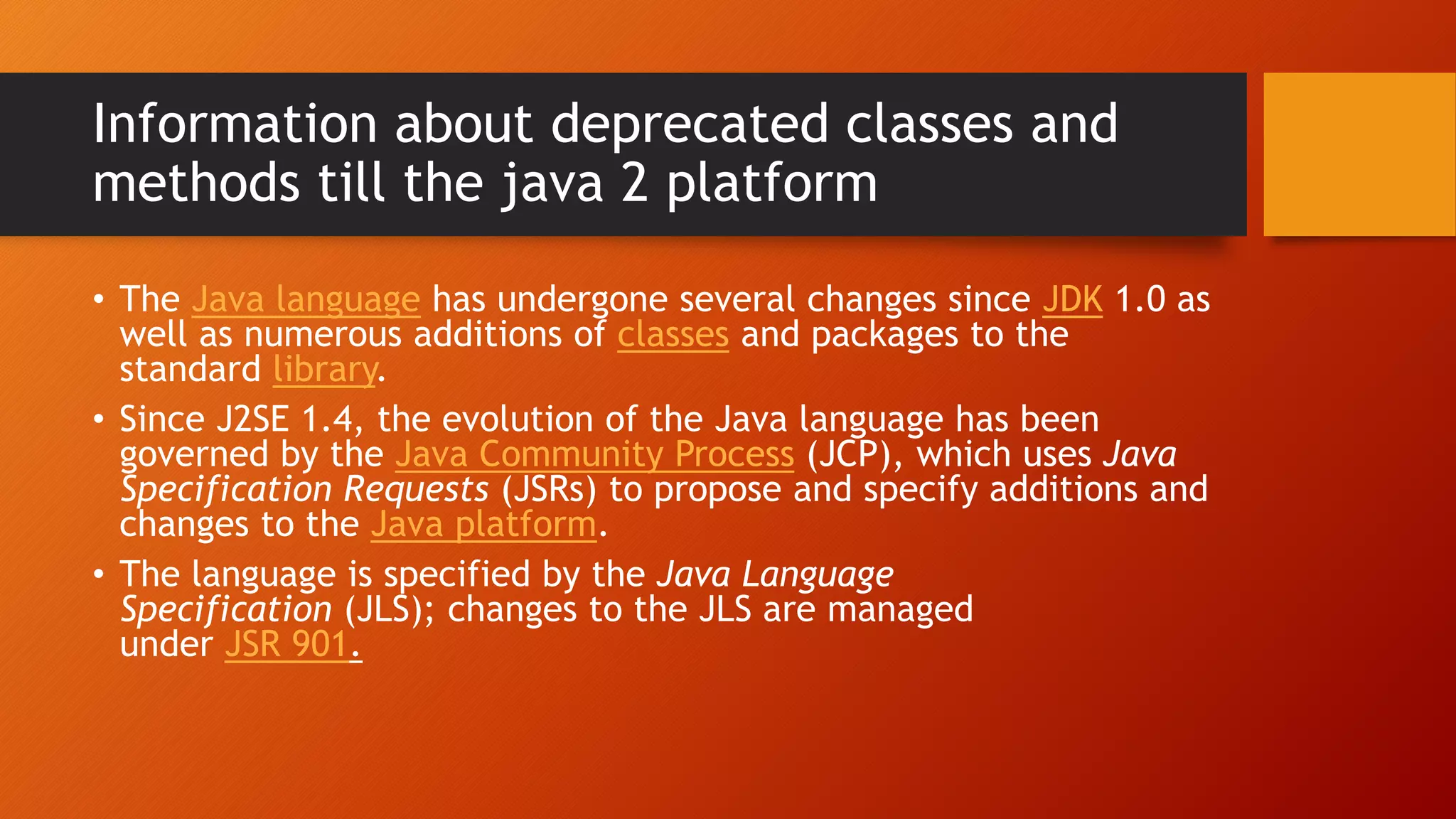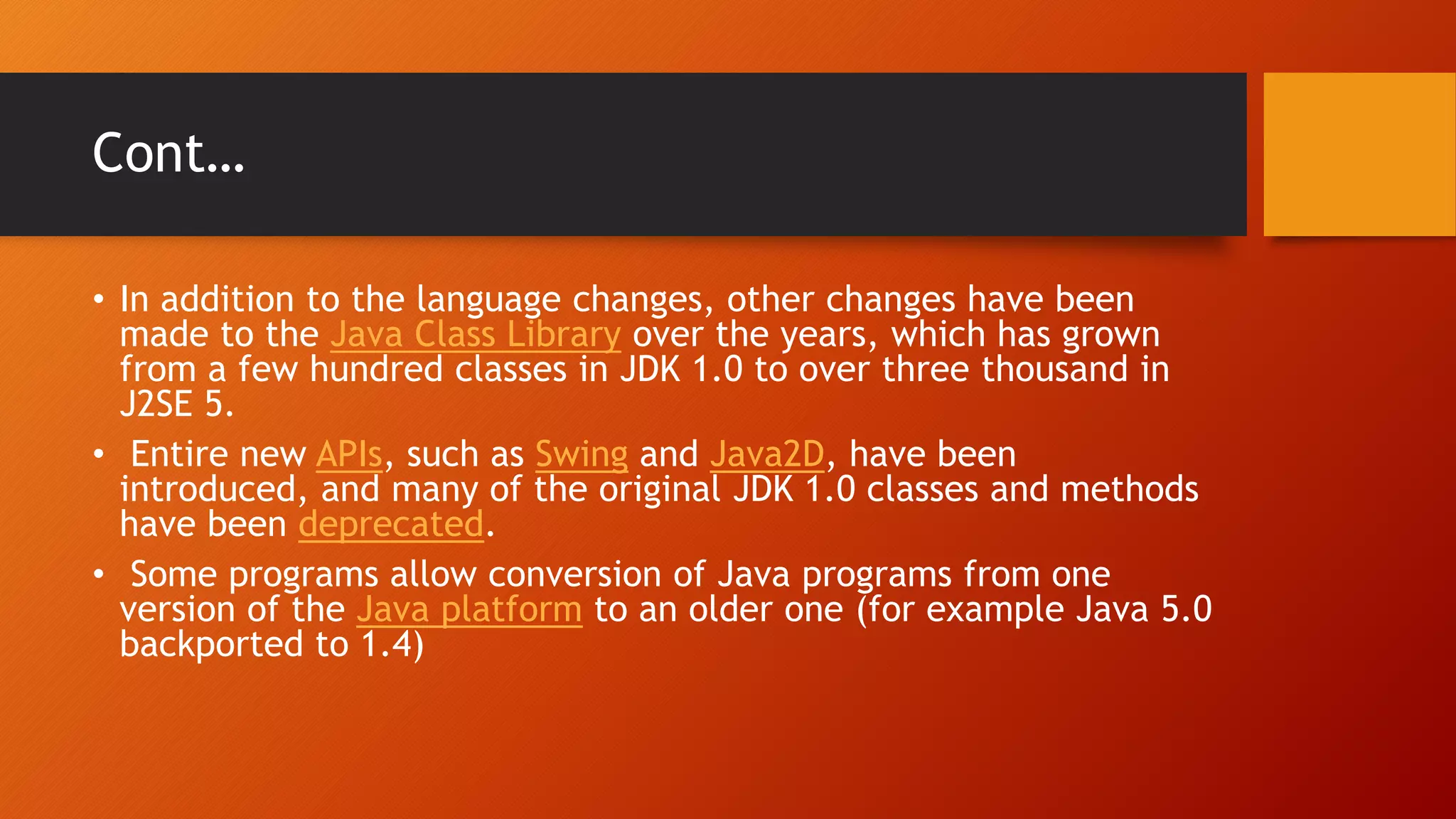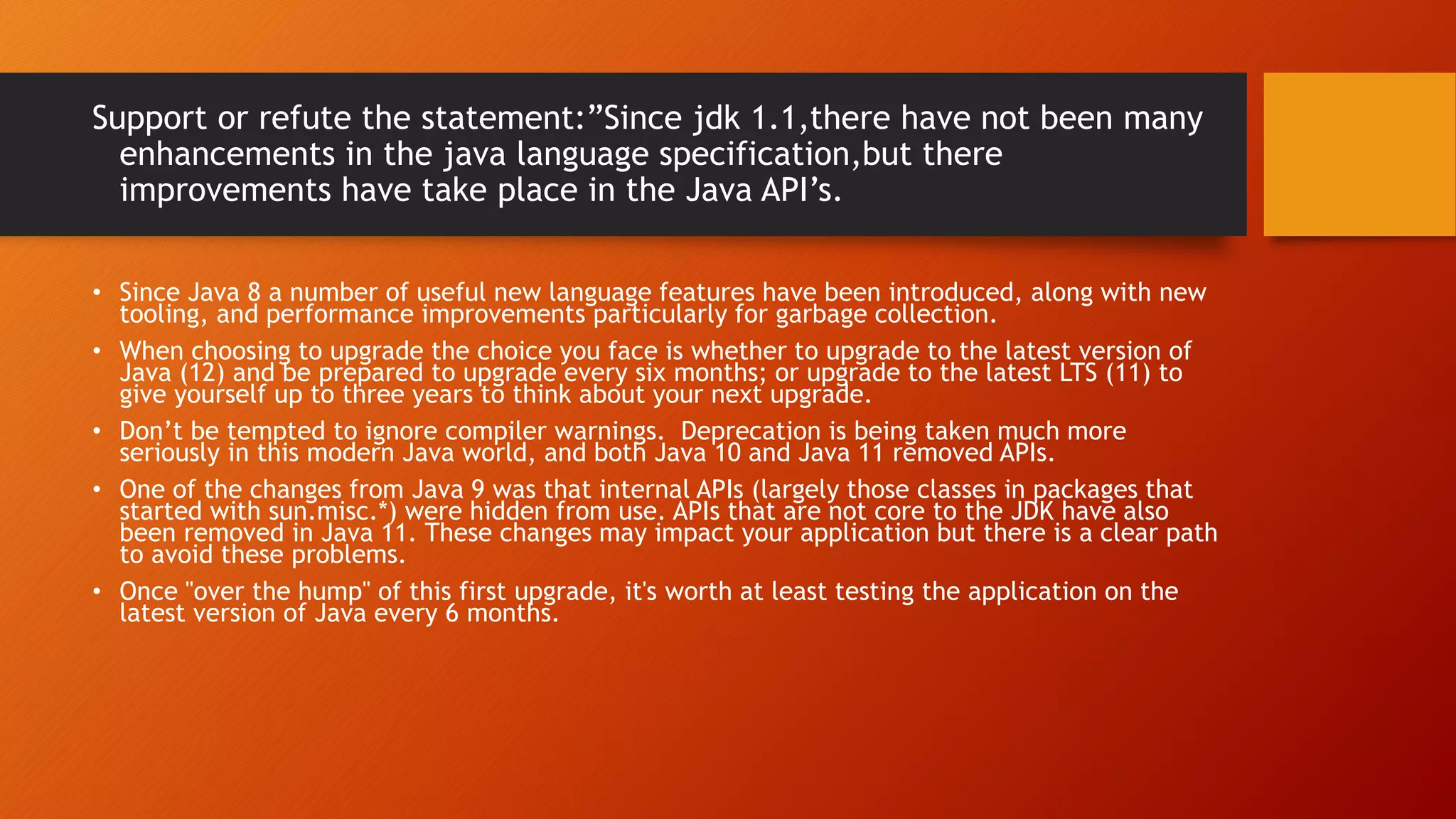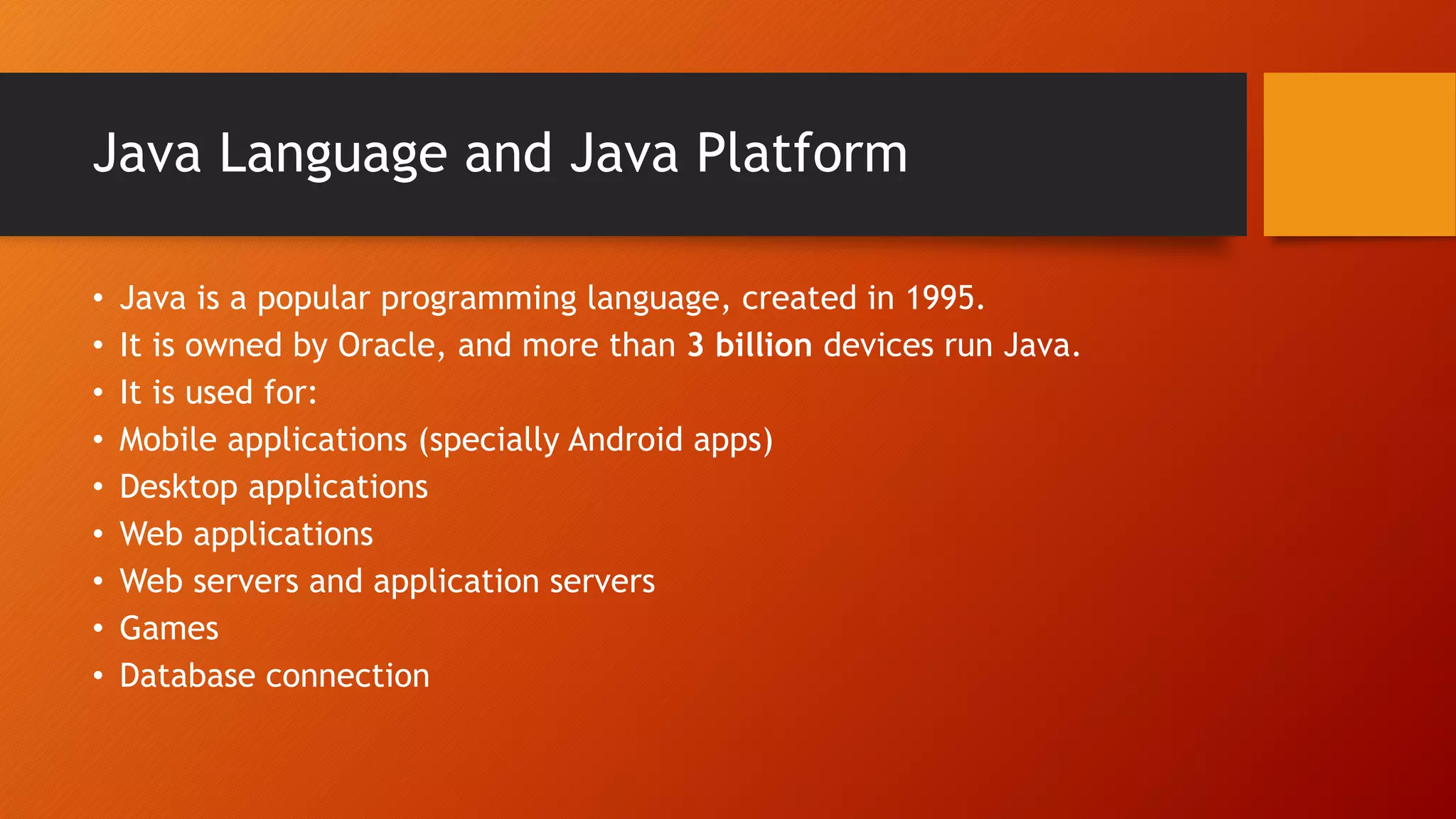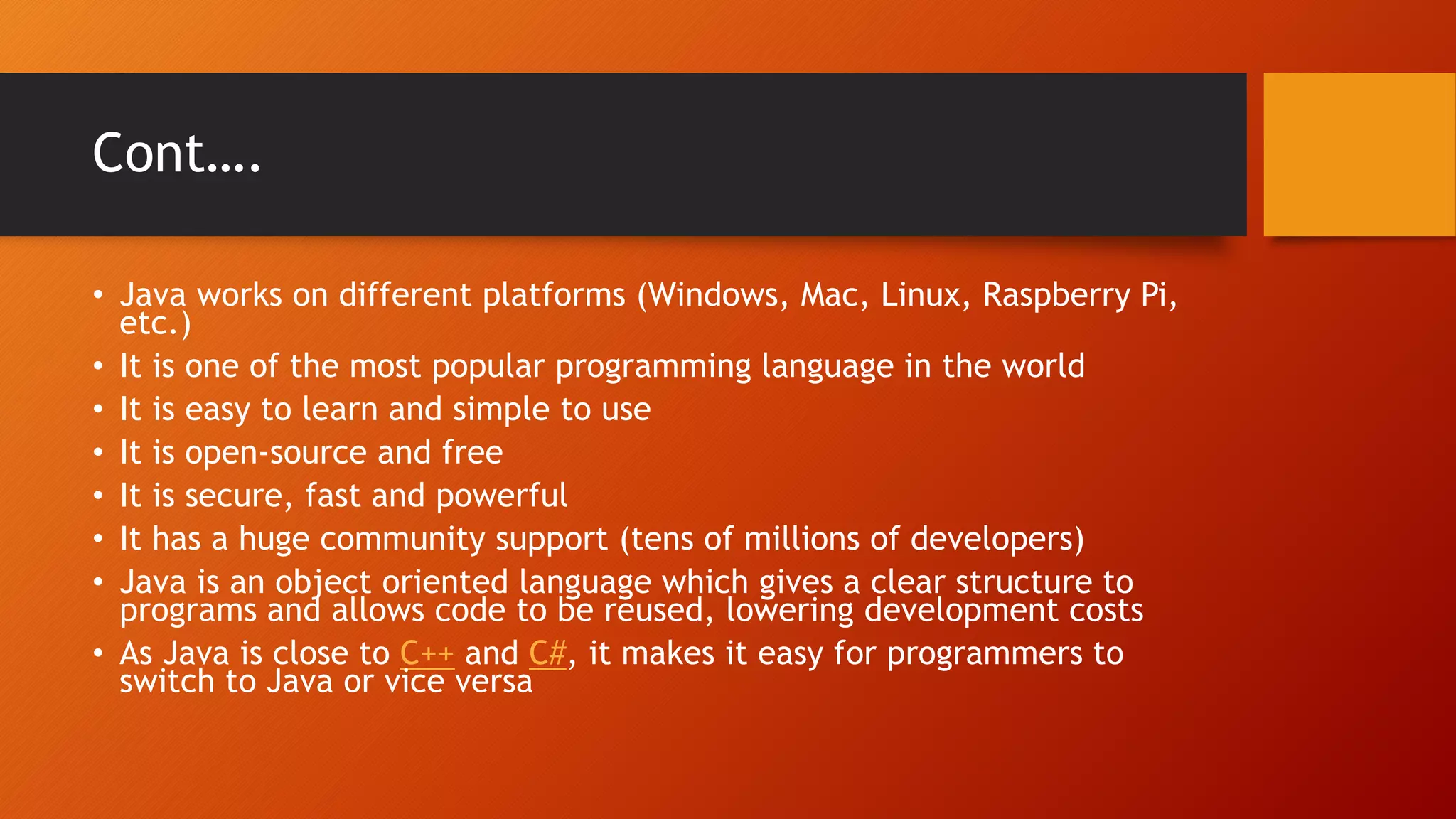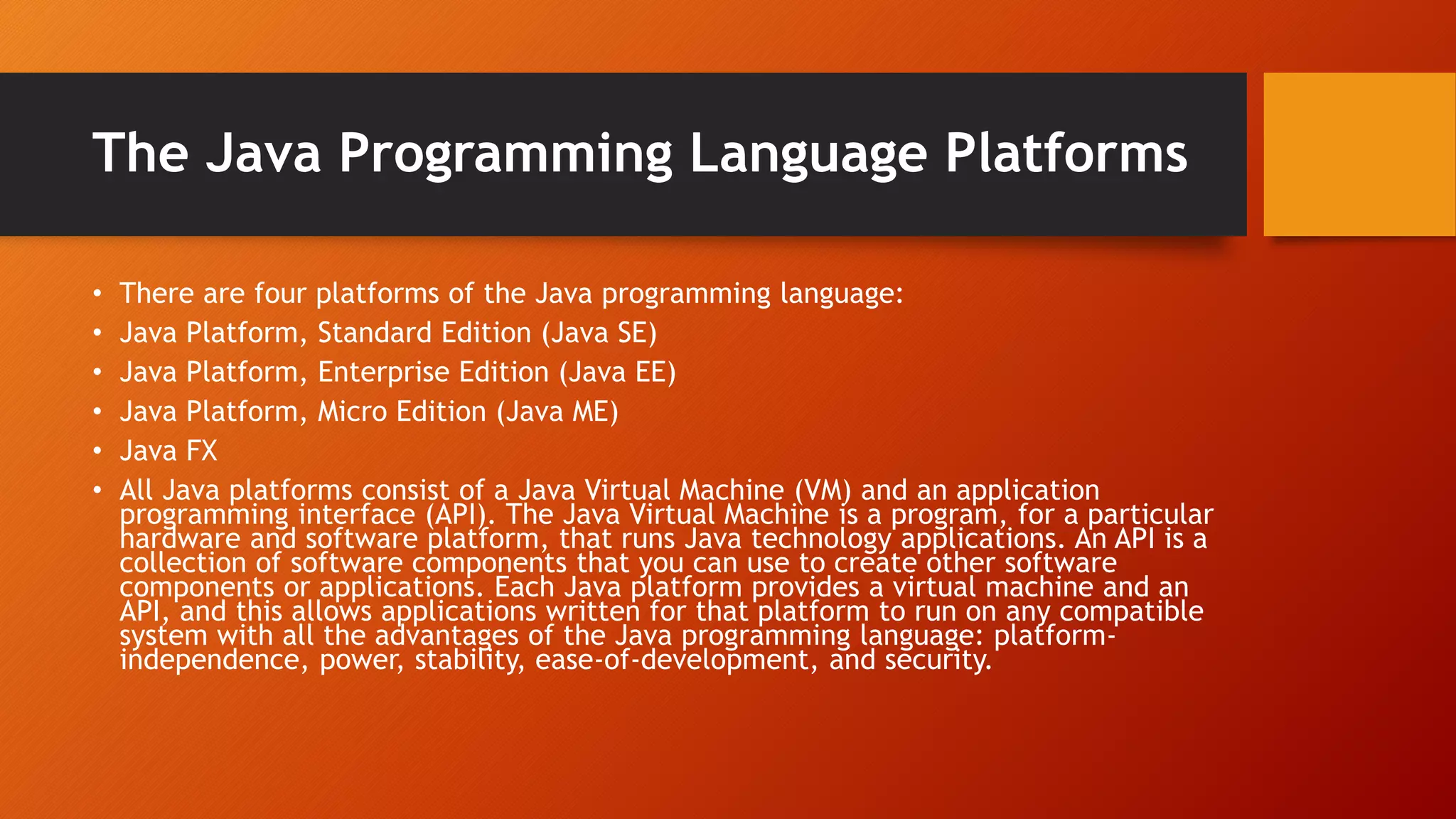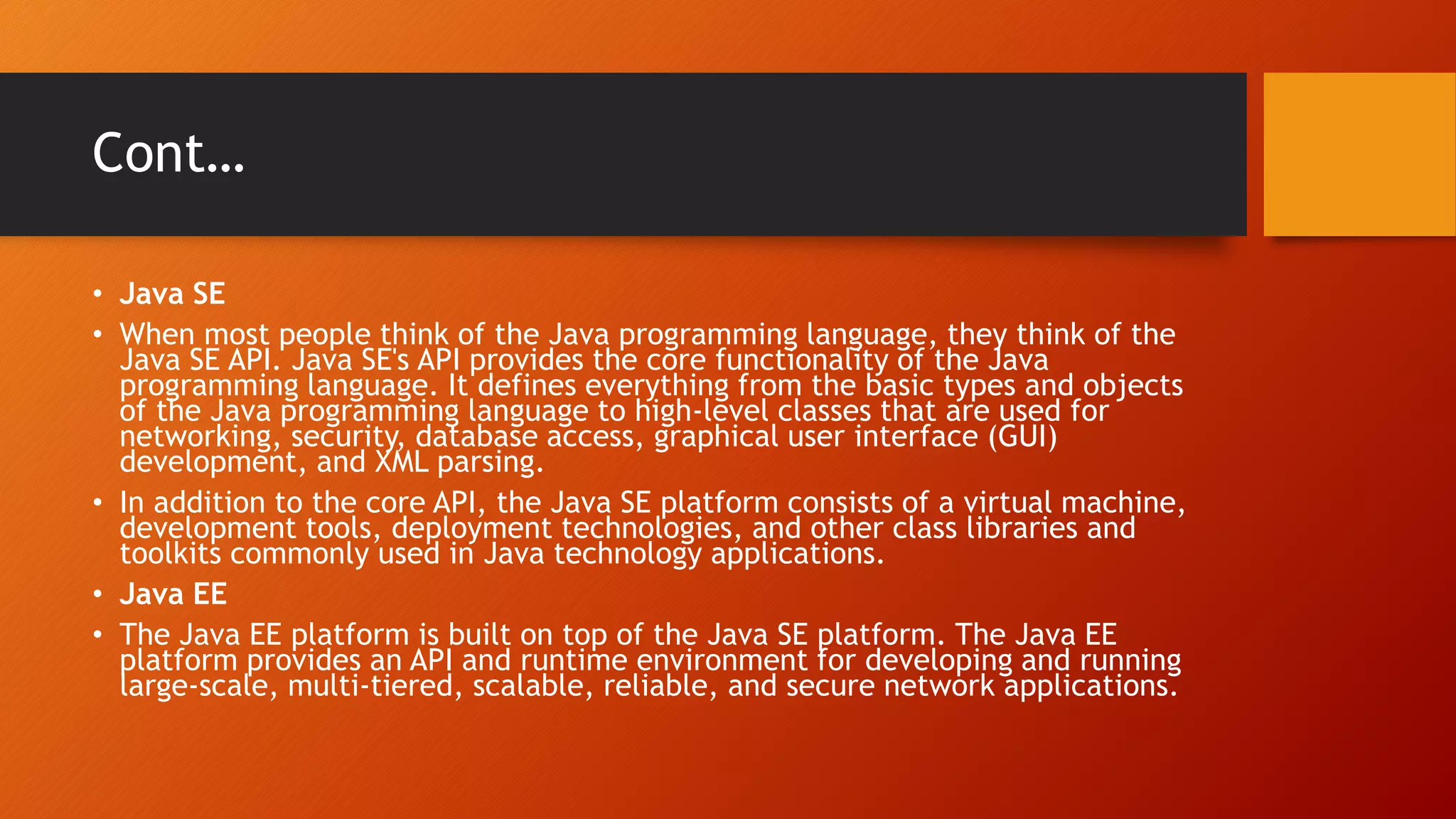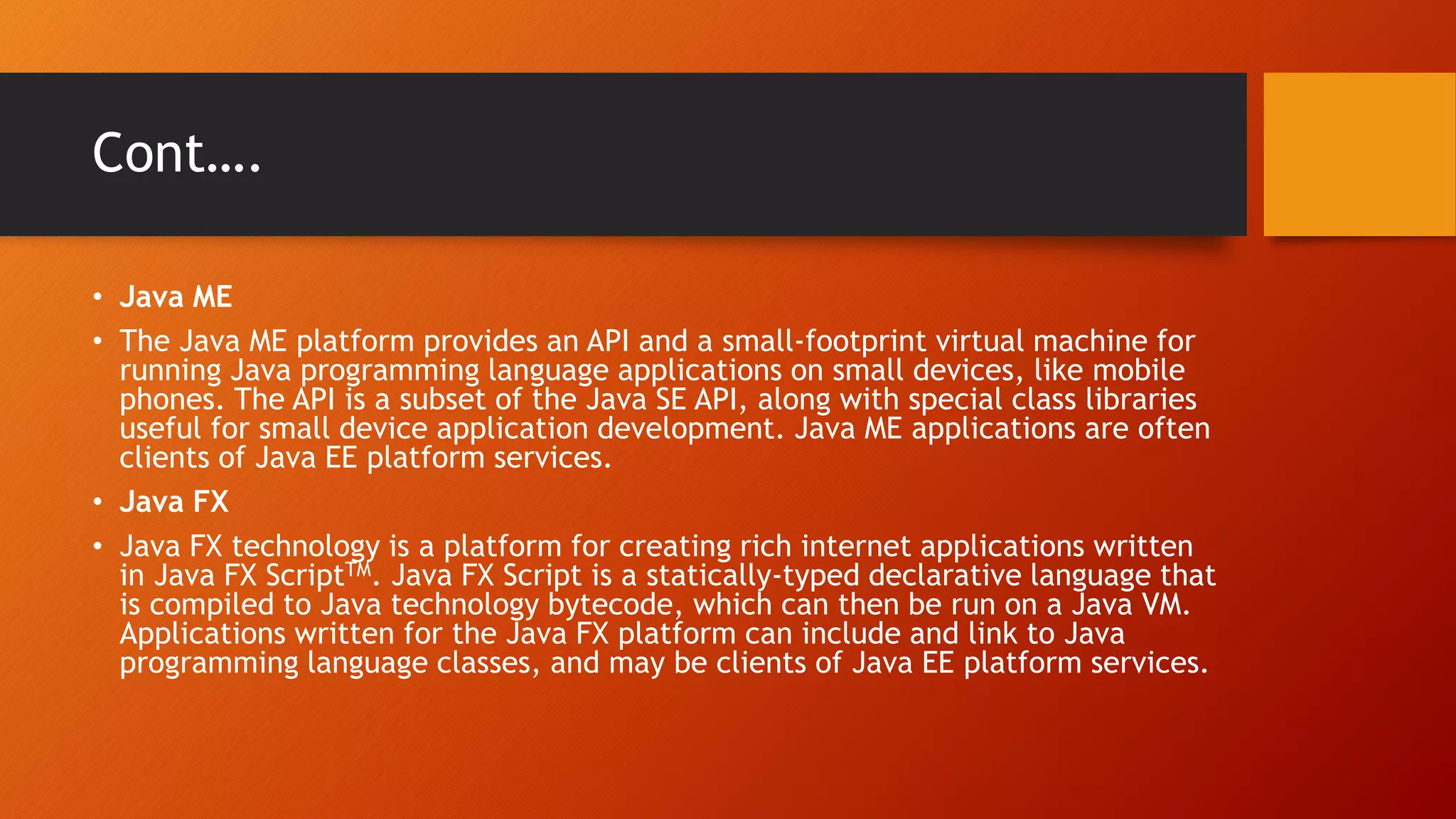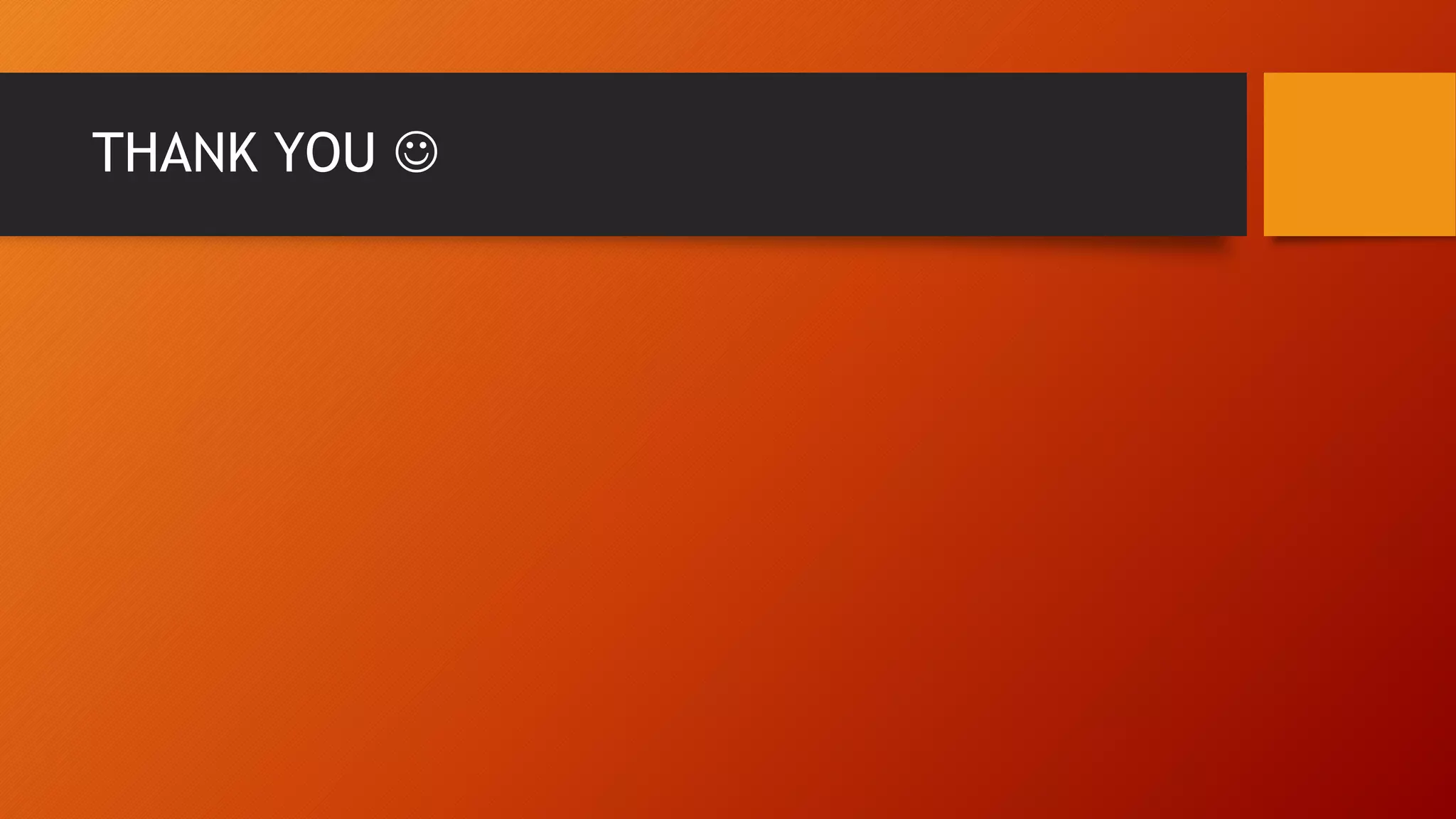This document provides an overview of the different versions of Java Development Kits (JDKs) and Java platforms, including JDK 1.0 through 1.4, Java 2 Standard Edition (J2SE) 1.2 through 1.4, Java 2 Enterprise Edition (J2EE), and Java 2 Micro Edition (J2ME). It describes the major additions and improvements in each release, such as new APIs, features, and deprecated classes. It also discusses the differences between the Java language and platforms. Finally, it provides support for the statement that while the Java language specification has not changed dramatically since JDK 1.1, the Java APIs have improved significantly.
